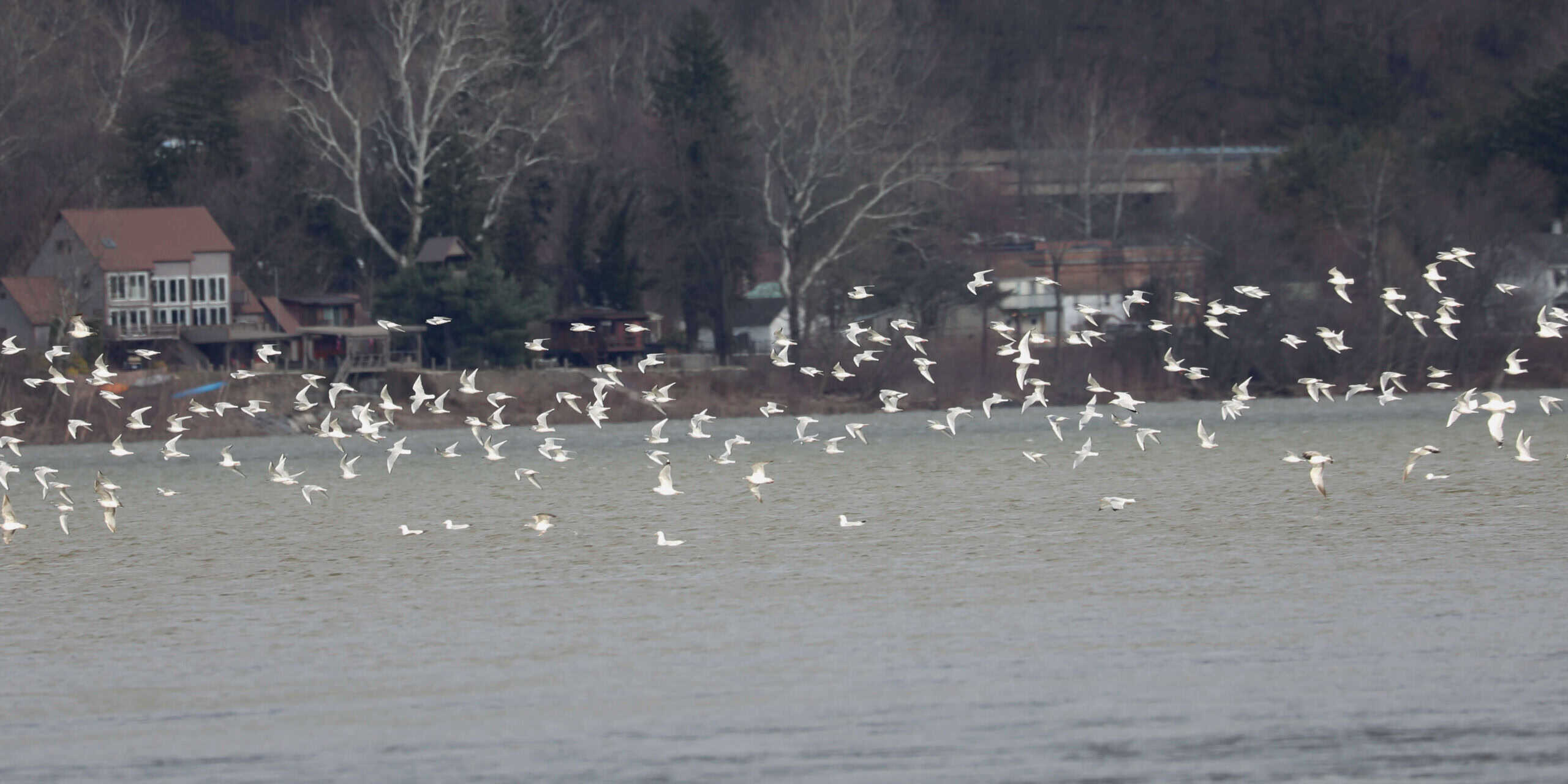Bonaparte’s Gulls
March and April are the best months to see Bonaparte’s Gulls in the Susquehanna Valley. Like many other birds, they’re on their way north this time of year. After spending the winter across the southeastern United States and on islands in the Caribbean Sea, they’re migrating to the coniferous forests of Canada. The nesting season is brief in Canada. Bonaparte’s Gulls lay their eggs in June, and by the end of July many will already start migrating south. There are 54 species of gulls in the world, and the Bonaparte’s Gull is the only one that nests in trees.
As they head north, Bonaparte’s Gulls often fly along major rivers like the Susquehanna. At the peak of migration, you may see several thousand together in the same flock. You can recognize them from Pennsylvania’s other gulls by their small size, thin bills, graceful flight, and the white feathers on the front of their wings. As they fly, they frequently swoop low to the water, capturing invertebrates and small fish to eat.
Bonaparte’s Gulls were named for Charles Lucien Bonaparte, who was an ornithologist who lived in the United States for eight years and worked with the Academy of Natural Sciences in Philadelphia. His work was important in helping other ornithologists to categorize and formally name the birds of North America. Bonaparte’s father was Lucien Bonaparte, the younger brother of Napoleon, Emperor of France.
Bonaparte’s Gulls
March and April are the best months to see Bonaparte’s Gulls in the Susquehanna Valley. Like many other birds, they’re on their way north this time of year. After spending the winter across the southeastern United States and on islands in the Caribbean Sea, they’re migrating to the coniferous forests of Canada. The nesting season is brief in Canada. Bonaparte’s Gulls lay their eggs in June, and by the end of July many will already start migrating south. There are 54 species of gulls in the world, and the Bonaparte’s Gull is the only one that nests in trees.
As they head north, Bonaparte’s Gulls often fly along major rivers like the Susquehanna. At the peak of migration, you may see several thousand together in the same flock. You can recognize them from Pennsylvania’s other gulls by their small size, thin bills, graceful flight, and the white feathers on the front of their wings. As they fly, they frequently swoop low to the water, capturing invertebrates and small fish to eat.
Bonaparte’s Gulls were named for Charles Lucien Bonaparte, who was an ornithologist who lived in the United States for eight years and worked with the Academy of Natural Sciences in Philadelphia. His work was important in helping other ornithologists to categorize and formally name the birds of North America. Bonaparte’s father was Lucien Bonaparte, the younger brother of Napoleon, Emperor of France.
About The Author
Dan Hinnebusch is the Ornithologist for Wild Birds Unlimited. Click to learn more.





